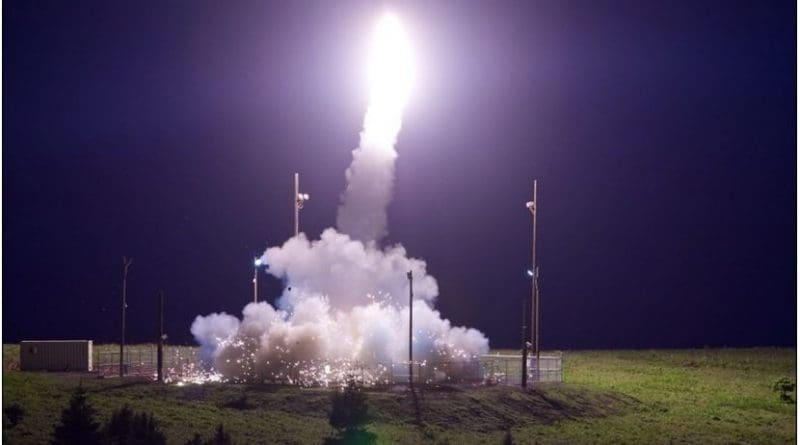North Korea’s ICBM Lands In Japan’s Economic Zone, Says US Official
By DoD News
By Terri Moon Cronk
The North Korean intercontinental ballistic missile that was launched July 28 from Mupyong-ni traveled about 620 miles before splashing down in the Sea of Japan about 103 miles from the coast of Hokkaido, Japan, the Pentagon director of press operations said Monday.
The U.S. Eighth Army and South Korean army personnel conducted a combined live fire exercise at first light Korea time shortly after the North Korean missile splashed down inside Japan’s Exclusive Economic Zone, Navy Capt. Jeff Davis told reporters.
“This exercise utilized the Army tactical missile system, also called ATACMS, and the [South Korean] Hyunmoo Missile-2, which fired two missiles each into territorial waters of South Korea along the east coast,” he said.
Alliance Working Together
The combined missile launches, conducted within hours of the North Korean ICBM launch, demonstrate the alliance’s ability to work together to defend South Korea, the spokesman said.
“This is a system that can be rapidly deployed and engaged, [and] provides deep-strike precision capability that enables the Korea-U.S. alliance to engage a full array of time-critical targets under all weather conditions. This exercise demonstrated our precision-fire capability,” Davis added.
B-1B Bombers Activated
Also Sunday, two U.S. Air Force B-1B bombers under the command of Pacific Air Forces joined counterparts from the South Korean and Japanese air forces in sequenced bilateral missions, he said.
After the bombers took off from Andersen Air Force Base in Guam, they flew to Japanese airspace, where two Japan Air Self Defense Force Mitsubishi F-2 fighter jets joined them, the captain said.
“The B-1s then flew over the Korean Peninsula where they were joined by four [South Korean] Air Force F-15 [Eagle] fighter jets. The B-1s then performed a low pass over Osan Air Base, South Korea, before leaving South Korean airspace and returning to Guam,” he said.
Throughout the mission, which took about 10 hours, the air crews practiced intercept and formation training to improve their combined capabilities and tactical skills while strengthening the longstanding military-to-military relationships in the Indo-Asia-Pacific region, Davis said.
“The U.S. maintains flexible bomber and fighter capabilities in the Asia-Pacific theater, retaining the ability to quickly respond to any regional threat in order to defend the U.S. homeland and in support of our allies,” he said.
THAAD Test
He said the U.S. Missile Defense Agency and soldiers from the 11th Air Defense Artillery Brigade from Fort Bliss, Texas, conducted a successful missile defense test yesterday using the Terminal High Altitude Area Defense system.
“A medium-range target ballistic missile was air-launched by a U.S. Air Force C-17 [Globemaster III] over the Pacific Ocean,” Davis said. “The THAAD weapon system located at Pacific Spaceport Complex Alaska in Kodiak, Alaska, detected, tracked and intercepted the target.”
That was the 15th successful intercept in 15 tests for THAAD, he noted.
Six activated THAAD batteries exist: three batteries are stationed at Fort Bliss, one battery is forward-deployed to Guam, one is deployed to South Korea, and one is stationed at Fort Hood, Texas, the captain said.
The spokesman explained that THAAD, which is strictly a defensive weapon system, provides a globally transportable, rapidly deployable capability to intercept ballistic missiles inside or outside the atmosphere during their final, or terminal, phase of flight.
“Our commitment to the defense of our allies, [South] Korea and Japan, in the face of these threats, remains ironclad,” Davis said.

